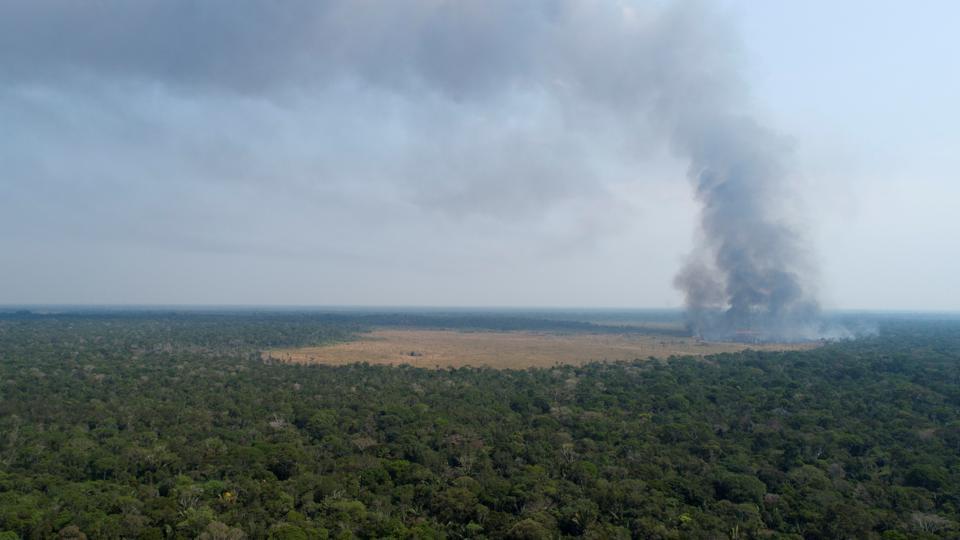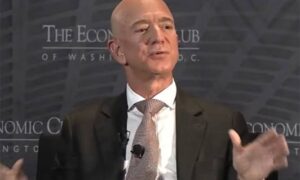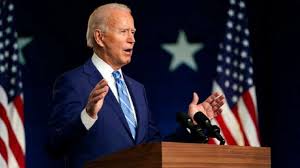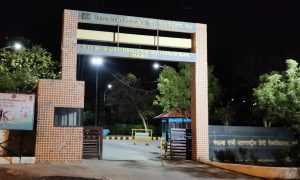Fires across the Brazilian Amazon have been raging for days now forcing the government to press warplanes into service to dump water on the burning forest. The destruction of the world’s largest tropical rain forest has sparked an international outcry for its.
Here’s a look at the fire and the role the Amazon plays in regulating the world’s climate:
WHAT IS CAUSING THE FIRES?
The current fires in the Amazon are not wildfires. They are manmade and are mostly set illegally by land grabbers who are clearing the forest for cattle ranching and crops.
Deforesting the Amazon is a long, slow process. People clear the land by cutting down the vegetation during the rainy season, letting the trees dry out and burning them during the dry season. Fully clearing the dense forest for agricultural use can take several years of slashing and burning.
“When I’m talking about 21st century deforestation, I don’t mean a family headed into the woods with a chainsaw,” said NASA researcher Doug Morton. “I mean tractors connected by large chains. They’re pulling trees out by their roots.”
He said researchers could see piles of trees months ago in satellite images. “They’re burning an enormous bonfire of Amazon logs that have been piled, drying in the sun for several months.”
“What has changed is the political discourse,” Nobre said. President Jair Bolsonaro has decreased the power and autonomy of forest protection agencies, which he says get in the way of licensing for developing land and accuses of being “fines industries.”
“The number of fires increasing is because people think law enforcement won’t punish them,” Nobre said.
WHAT IT MEANS FOR THE WORLD’S CLIMATE?
Fires in the Amazon not only mean the carbon-absorbing forest is disappearing, but the flames themselves are emitting millions of tons of carbon every day. Nobre says we’re close to a “tipping point” that would turn the thick jungle into a tropical savannah.
The rainforest recycles its own water to produce a portion of the region’s rain, so deforestation makes rains less frequent, extending the dry season. Nobre estimates that if 20% to 25% of the forest is destroyed, the dry season will expand enough that it will no longer be a forest, but a savannah.
“Unfortunately, we are already seeing signs of the Amazon turning into a savannah,” he said, citing the increasingly long dry seasons. “It’s not just theoretical anymore, it’s happening already.”
WHAT IS AT RISK?
The Amazon basin, spanning 7.4 million square kilometers, covers nearly 40 percent of Latin America and is spread across nine countries: Bolivia, Brazil, Colombia, Ecuador, French Guiana, Guyana, Peru, Suriname and Venezuela. About 60 percent of it is in Brazil.
The Amazon forest, of which 2.1 million sq km are protected zones, is home to a biodiversity sanctuary that is unique in the world. A quarter of the Earth’s species are found there, namely 30,000 types of plants, 2,500 fish, 1,500 birds, 500 mammals, 550 reptiles and 2.5 million insects, according to the Amazon Cooperation Treaty Organization (ACTO).
In the past 20 years, 2,200 new species of plants and vertebrates have been discovered there.
LUNGS OF THE EARTH
The Amazon contains a third of the world’s primary forests and, via the Amazon River and its tributaries, provides 20 per cent of the Earth’s unfrozen fresh water.
The Amazon is the world’s largest river and — by some accounts since new research was carried out in 2007 — the longest, running for up to 6,900 kilometers (4,287 miles).
The forest acts as a carbon sink, absorbing more CO2 than it emits while releasing oxygen, and stocking 90 to 140 billion tonnes of CO2, which helps regulate worldwide global warming, according to the World Wildlife Fund (WWF).
But deforestation is reducing this capacity for absorbing CO2.
TRIBES AT RISK
The Amazon has been inhabited for at least 11,000 years and today counts 34 million people, of whom two-thirds live in cities.
Nearly three million are Indians who are members of some 420 different tribes, around 60 of which live in total isolation, according to ACTO. The Amazon’s Indians speak 86 languages and 650 dialects.
The largest Amazon tribe is the Tikuna, counting some 40,000 members who live in Brazil, Peru and Colombia, according to Survival International.




























 WhatsApp us
WhatsApp us
Pingback: 카지노사이트
Pingback: Professor Herb CBD - CBD Hemp Flowers
Pingback: cele mai bune
Pingback: 로미로미
Pingback: top10best.io/
Pingback: เงินด่วน 10 นาที สุรินทร์
Pingback: https://www.iwanbanaran.com/2018/12/31/marc-marquez-ungkap-alasan-menerima-lorenzo-di-honda/
Pingback: CEO Marc Menowitz
Pingback: course here
Pingback: hotels near Ealing Common Tube Station
Pingback: adipex online pharmacy overnight delivery
Pingback: huong dan dang ky 12bet
Pingback: danh de online
Pingback: immediate edge review 2020
Pingback: Buy THC Vape Cartridges Online
Pingback: immediate edge
Pingback: fun88
Pingback: Robotic Process Automation in Software Testing
Pingback: replica gmt rolex for sale
Pingback: wigs
Pingback: 메이저놀이터
Pingback: dumps cc sites
Pingback: Urban Nido India Real Estate
Pingback: 토토사이트
Pingback: microsoft exchange online plan
Pingback: Realistic Wigs
Pingback: pic5678
Pingback: Runtz Marijuana Dispensary
Pingback: betvole giris
Pingback: Firearms For sale online
Pingback: nova88
Pingback: sasha liciosa stripchat
Pingback: sbobet
Pingback: Springfield 911 380 For Sale
Pingback: Buy Firearms in USA